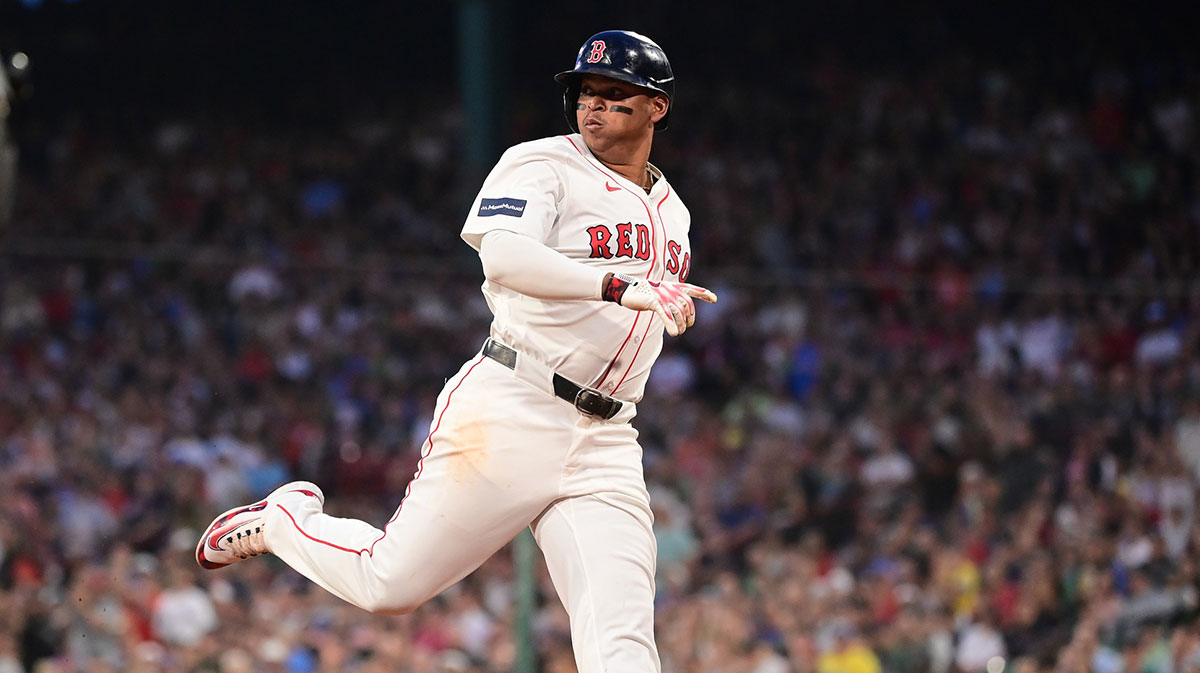
When the San Francisco Giants stunned baseball fans Sunday by acquiring Rafael Devers from the Boston Red Sox, many wondered how the deal came together so suddenly. Turns out, it wasn’t as abrupt as it seemed.
Giants executive and franchise icon Buster Posey told reporters that conversations with Boston had been happening “for a few weeks.” Posey explained the motivation clearly: “The bat is so special. It’s really hard to acquire this type of talent at this point of his career. It felt like this was a chance to take a shot.” The Giants did just that—making a bold midseason push for one of the game’s premier hitters.
Devers, a three-time All-Star, is slashing .272/.401/.504 with 15 home runs and 58 RBIs this season. Still just 28, he’s on pace for one of the best years of his career. The Giants will take on the remaining eight-plus years and $250+ million of Devers’ 10-year, $313.5 million contract. In exchange, Boston receives a package of players headlined by lefty Kyle Harrison and flamethrowing righty Jordan Hicks, along with outfield prospect James Tibbs III and rookie-league pitcher Jose Bello.
Rafael Devers is a season-changing acquisition the Giants

The deal marks another chapter in the Red Sox’s pattern of cutting ties with homegrown stars—from Mookie Betts to Xander Bogaerts, and now Devers. But this trade wasn’t just about money. It followed months of internal friction. Tension grew when Devers resisted a position change after Boston signed Alex Bregman to play third. He eventually agreed to be the full-time DH, but after first baseman Triston Casas suffered a season-ending injury, Devers declined to shift to first. His refusal triggered a sit-down with Red Sox brass and helped push the trade over the finish line.
For the Giants, acquiring Devers signals more than just an offensive upgrade. It’s the franchise’s first successful move for a superstar slugger after falling short on Aaron Judge, Shohei Ohtani, and Carlos Correa in recent years. The bat alone justifies the price tag. Whether Devers plays DH or eventually rotates at first base, his presence transforms San Francisco’s lineup and energizes a fan base hungry for a new face of the franchise.
Boston, meanwhile, is betting on its youth movement. Harrison adds upside to a shaky rotation, while Hicks could strengthen a battered bullpen. Tibbs and Bello bring long-term potential, but their development will take time. For now, Red Sox fans are left to grapple with a familiar question: Why did another franchise cornerstone have to go? This deal wasn’t just about baseball. It was about control, timing, and belief. And for the Giants, it was a bet worth making.
More must-reads:
- Underrated American League All-Star candidates
- Underrated National League All-Star candidates
- The 'MLB Comeback Player of the Year award winners' quiz
Breaking News
Trending News
Customize Your Newsletter
 +
+
Get the latest news and rumors, customized to your favorite sports and teams. Emailed daily. Always free!







